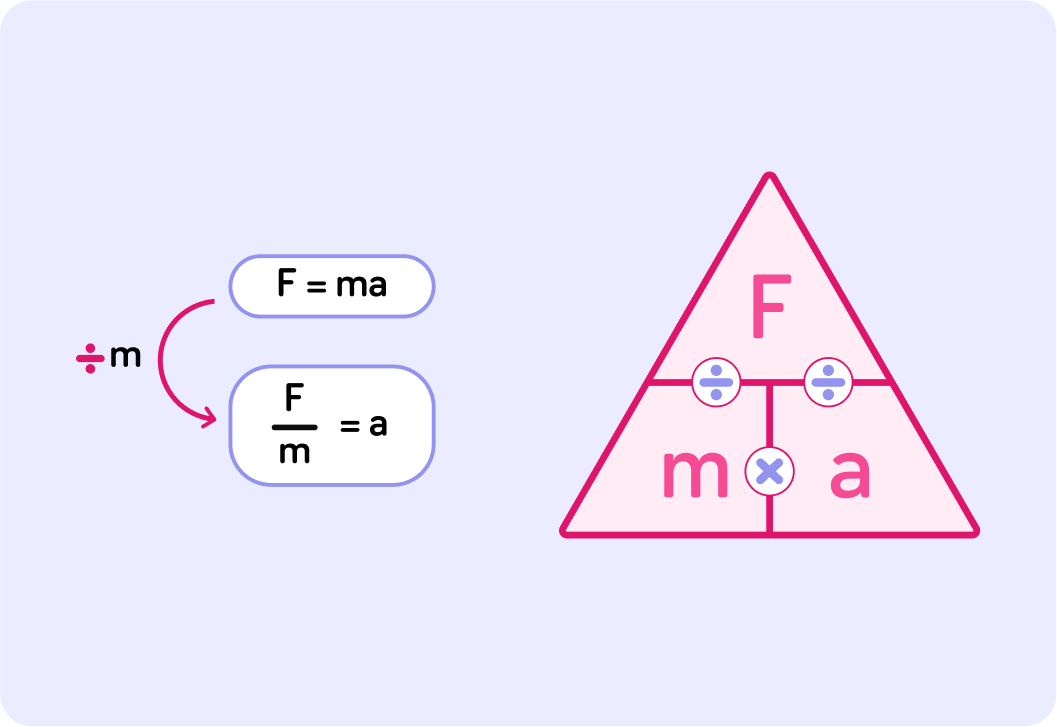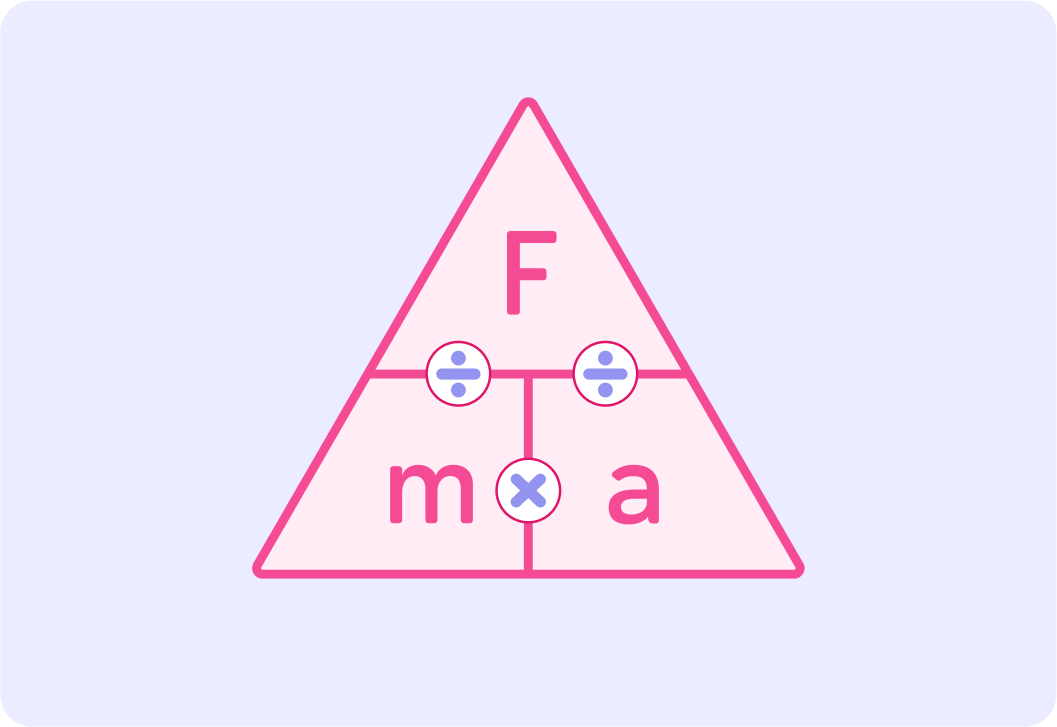YOU ARE LEARNING:
Calculating Newton's Second Law

Calculating Newton's Second Law
We can use the equation derived from Newton's Second Law to find the resultant force, acceleration and mass of an object.
True or false? With the same resultant force, an object with less mass will accelerate less than an object with more mass.

Newton's second law can be written as a formula describing the relationship between force, mass and acceleration. If an object with a mass of 25 kg accelerates at a rate of 3 m/s2 with a resultant force of 75 N , what is the formula?

If a car with a mass of 1600 kg accelerates at 4 m/s2, how much force is the engine producing?

A tennis ball has a mass of 0.2 kg. It accelerates at a rate of 112 m/s2 when hit by the tennis racket. How much force does the tennis players racket exert on the ball?

Newton's second law can be written as Force=mass×acceleration , or F=ma. To find the force, we simply multiply mass and acceleration. The formula can also be rearranged to find mass, or acceleration.
To rearrange the formula to make acceleration the subject, divide both sides of the formula by mass.
acceleration=massForce

Another way to rearrange a formula is to put it into a triangle. You simply cover the variable you are looking for, and you are left with the correct formula!
If we cover up acceleration, the triangle tells us that the formula to find it is massForce

Using either of these methods, find the formula to calculate mass if you are given the force and acceleration.
A) mass=Force×acceleration B) mass=Forceacceleration C) mass=accelerationForce


If you push a trolley with 15 N of force, and it accelerates at 0.5 m/s2, what is the mass of the trolley?

If a 62 kg runner exerts a force of 45 N , what is his acceleration?

Sometimes, we need to find the resultant force acting on an object before being able to apply the formula. Remember that if two forces are acting in the same direction, you add them together to find the resultant. If they are acting in opposite direction, you subtract them.
A motorcycle is accelerating. It has a forwards driving force of 1800 N , and the magnitude of the drag force acting in the opposite direction is 650 N. The mass of the motorcycle and the driver is 210 kg . What is the acceleration?
What is the resultant force acting on the motorcycle?

The acceleration of the motorcycle is ...
A) 8.6 m/s2 B) 1.8 m/s2 C) 5.5 m/s2.

You push a box with a force of 12 N . The opposing force of friction has a magnitude of 5 N and the box accelerates at a rate of 0.2 m/s2 . What is the mass of the box?

